Lost in Space (4K UHD Blu-ray Review)
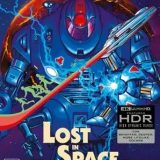 There’s a moment late in Lost in Space where the Robinson family is rushing to escape a crumbling planet and it cuts to Heather Graham, who has a look of supreme indifference. I wondered if she was focused on finishing production on this nonsense so she could go on the vacation that this paycheck was covering. “Lost in Space” has an ambitious 750 special effects shots; however, I felt just as bored watching as Graham seemingly was filming.
There’s a moment late in Lost in Space where the Robinson family is rushing to escape a crumbling planet and it cuts to Heather Graham, who has a look of supreme indifference. I wondered if she was focused on finishing production on this nonsense so she could go on the vacation that this paycheck was covering. “Lost in Space” has an ambitious 750 special effects shots; however, I felt just as bored watching as Graham seemingly was filming.
Film 




The original television series was innocent enough. A gee-whiz B-level science fiction 1960s television series about a family lost amongst the starts, simply trying to get home. Why are they lost? A dastardly Dr. Smith sabotaged their mission and in the process, became a stowaway. With a catchy theme by John Williams and charisma to spare, the series became a hit, lasting for three seasons with a total of 83 episodes.
The film, directed by Stephen Hopkins and written by Akiva Goldsman, keeps the skeleton idea of the show but stuffs it with effects that are inconsistent in quality and dialogue that makes the viewer look for the mute button. Gary Oldman as the villainous Dr. Smith is the only actor attempting to inject some life into this galactic slog. Other players include Professor John Robinson (William Hurt), his wife Maureen (Mimi Rogers), and their three children: Judy (Heather Graham), Penny (Lacey Chabert) and Will (Jack Johnson).
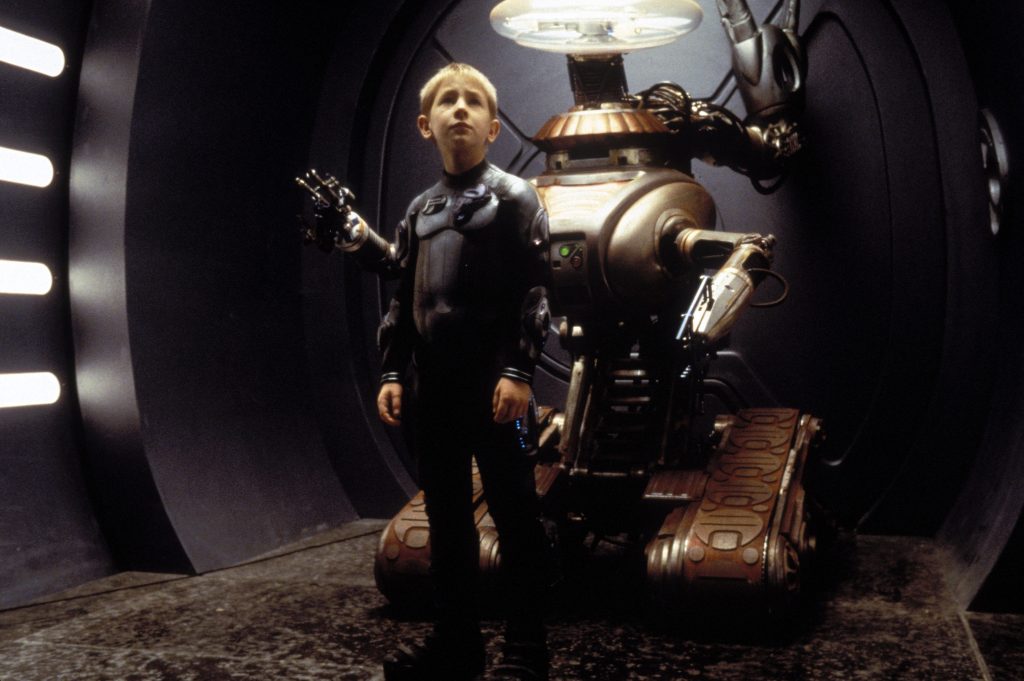
The family is leaving Earth in search of a new planet. Due to depleting ozone layer and whatnot, our home won’t be habitable for too much longer. While teenage Penny is crying because she won’t be able to have fun on Earth any longer in a couple days, Dr. Smith is re-programming the Robot to kill the family but involuntarily gets stuck on the ship. Chaos happens and in order to avoid being burnt to a crisp by the sun, they decide to light speed through the sun, a maneuver that sends them somewhere in the middle of nowhere. By the end of the film, you’ll wish they had just crashed into the sun.
The film tricks you into thinking it might not be all bad. For a good while, it’s actually somewhat enjoyable, despite Don West being portrayed as a borderline sexual predator. Matt LeBlanc brings zero charisma to a character that was clearly pitched as a discount Han Solo. “That’s one cool fish I’d love to thaw,” he says to John Robinson about Judy, unaware she’s his daughter.
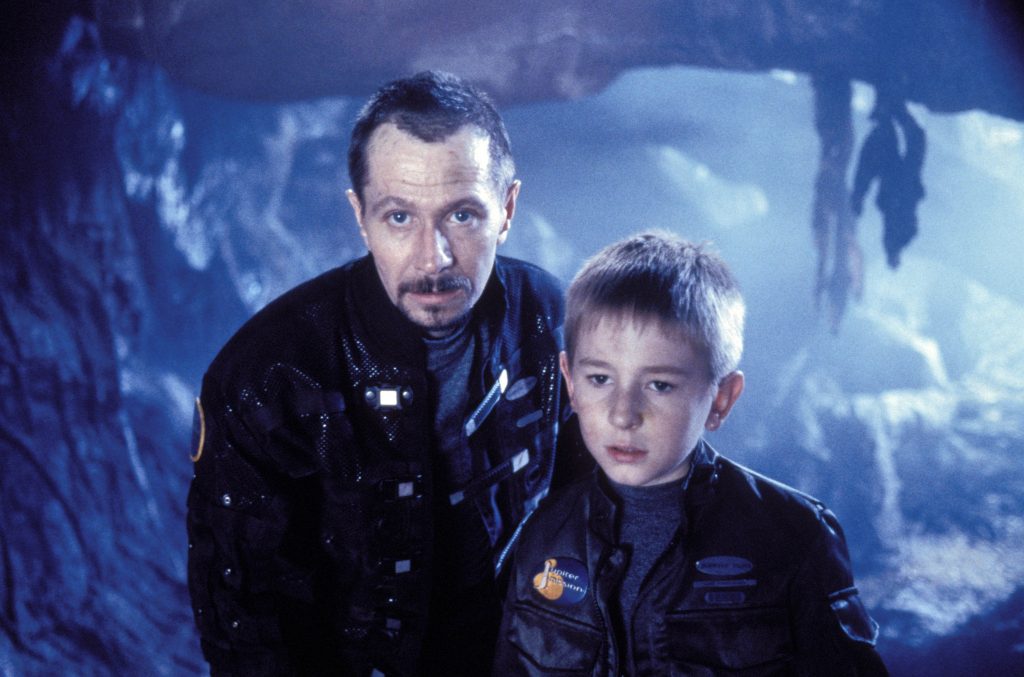
There’s a point where the film clearly should end, but it keeps going for another 45 minutes. It sets up character arcs and interesting narrative threads, and seems like it might actually do something with them. But alas, it drops it all and meanders until the film realizes it should probably end. Sorry Robinson family, you’re destined to be lost.
Video 




Encoding: HEVC / H.265
Resolution: 4K (2160p)
HDR: Dolby Vision, HDR10
Aspect Ratio: 2.39:1
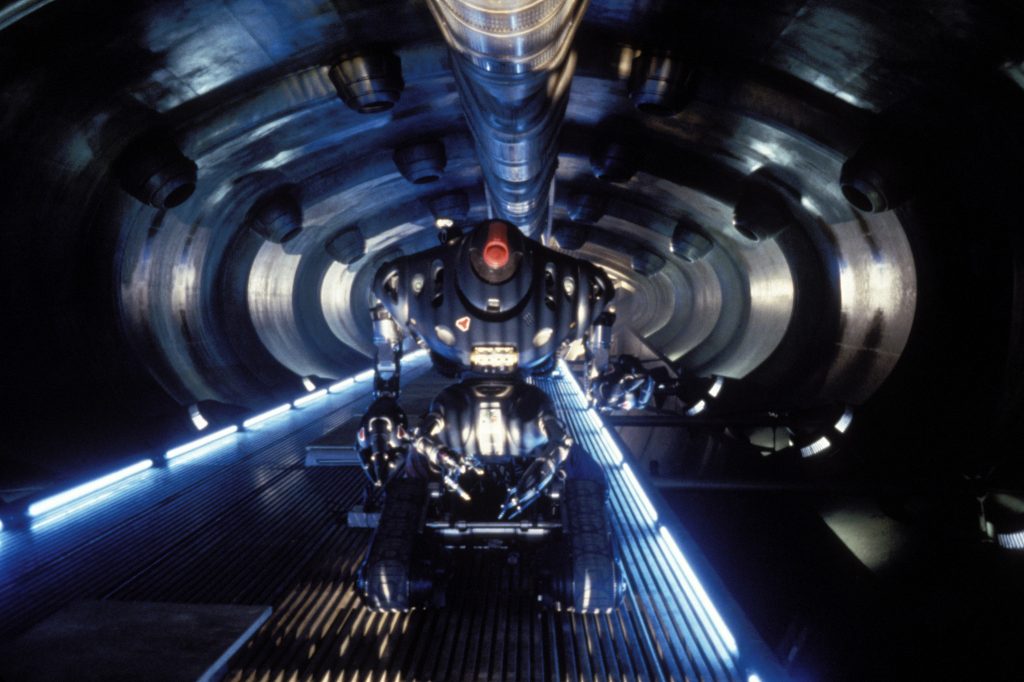
Clarity/Detail: I viewed Lost in Space on Sony’s Class BRAVIA 9 TV with Pansonic’s DP-UB9000P1K player. This film has been gifted with a new 4K scan including Dolby Vision. The ships, the planet, the costumes all pop with vibrancy. The only qualm are the antiquated CGI shots, especially with the Blarp character and the Spider Smith final enemy. Some shots look nearly DVD quality then will jump back into 4K crisp. This isn’t an issue with the transfer, overseen by director Stephen Hopkins. It’s an issue with the original source material. Any moment with the Jupiter 2 look outstanding though. If you’re wondering, some of those CG shots didn’t look good back in 1998, so viewing them in 4K does no favors. The clarity on the suits are impressive in a way I’ve never noticed. They really glisten which gives them a truly otherworldly vibe.
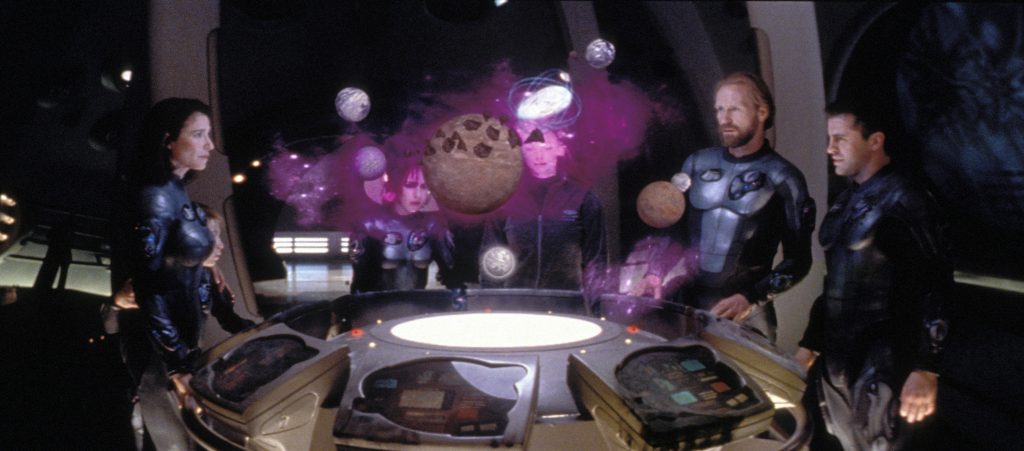
Depth: Just look at the scene where the Jupiter 2 escapes the exploding Proteus ship to see a grand level of depth. There are sequences on the planet where you can marvel at the background and how far it extends. Action and movements are smooth.
Black Levels: This isn’t a reference quality disc, but the black levels are good. Shadows have depth, especially with the Spider Smith towards the end.
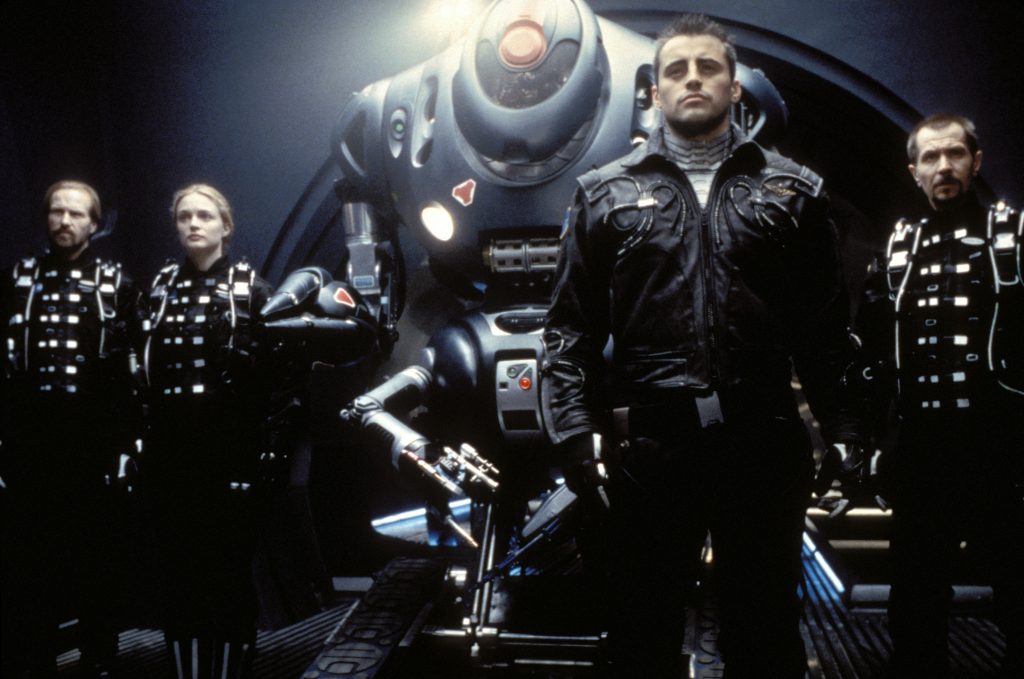
Color Reproduction: Lost in Space is a somewhat colorless film, with a lot of grey tones throughout. All the color looks natural though. I just wish it were more vibrant.
Flesh Tones: Flesh tones are natural.
Noise/Artifacts: Clean
Audio 




Audio Format(s): English: DTS-HD Master Audio 5.1, English: 2.0
Subtitles: English SDH
Dynamics: I found this audio mix to be rather anemic at times, I’m sorry to say. Lost in Space is a picture that deserved a full atmo mix, and it is apparent when viewing it. That’s not to say it’s bad. There are fun moments in the action sequences, from the beginning space fight to the escape from the planet at the end. In order to get the full experience, I did turn the volume up more than usual. The score has some fun robust moments that soar throughout the speakers. The most impressive moment is when the Jupiter 2 escapes by flying through the planet and the subsequent explosion that signals the end of the film.
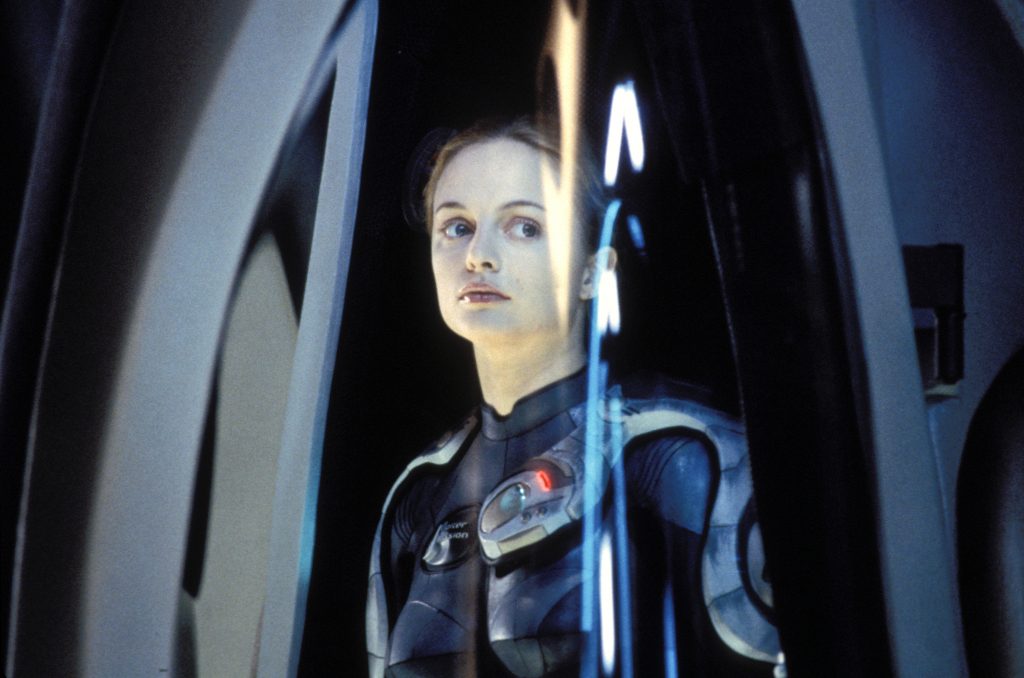
Height: N/A
Low Frequency Extension: Bass is evident in the big set pieces, but it’s not something that will catapult you into the stars.
Surround Sound Presentation: The most impressive moment for the sound mix is actually when the family first arrives on the planet. Throughout the scenes, you can hear in the background the turbulence of the planet, threatening to self destruct at any moment. Same with the spider scene. Before the insects make their appearance, you hear the metal clanking of their legs all around the room.
Dialogue Reproduction: Dialogue is always clear.
Extras 




- Archive audio commentary with director Stephen Hopkins and screenwriter Akiva Goldsman
- Archive audio commentary with visual effects supervisors Angus Bickerton and Lauren Ritchie, director of photography Peter Levy, editor Ray Lovejoy, and producer Carla Fry
- A Space Odyssey, a newly filmed interview with director Stephen Hopkins
- Lights in the Sky, a newly filmed interview with director of photography Peter Levy
- A Journey Through Time, a newly filmed interview with producer and screenwriter Akiva Goldsman
- Art of Space, a newly filmed interview with supervising art director Keith Pain
- Crafting Reality, a newly filmed interview with Kenny Wilson, former mould shop supervisor at Jim Henson’s Creature Shop
- Sound of Space, a newly filmed interview with sound mixer Simon Kaye and re-recording mixer Robin O’Donohue
- Lost But Not Forgotten in Space, a new video essay by film critic Matt Donato
- Deleted scenes
- Building the Special Effects, an archival featurette with visual effects supervisor Angus Bickerton and animatics supervisor Mac Wilson
- The Future of Space Travel, an archival featurette exploring the film’s vision of the future
- TV Years, a Q&A with the original cast of the TV series
- Bloopers
- Reversible sleeve featuring original and newly commissioned artwork by Pye Par
- Illustrated collector’s booklet featuring new writing by critic Neil Sinyard
- Article from American Cinematographer from 1998
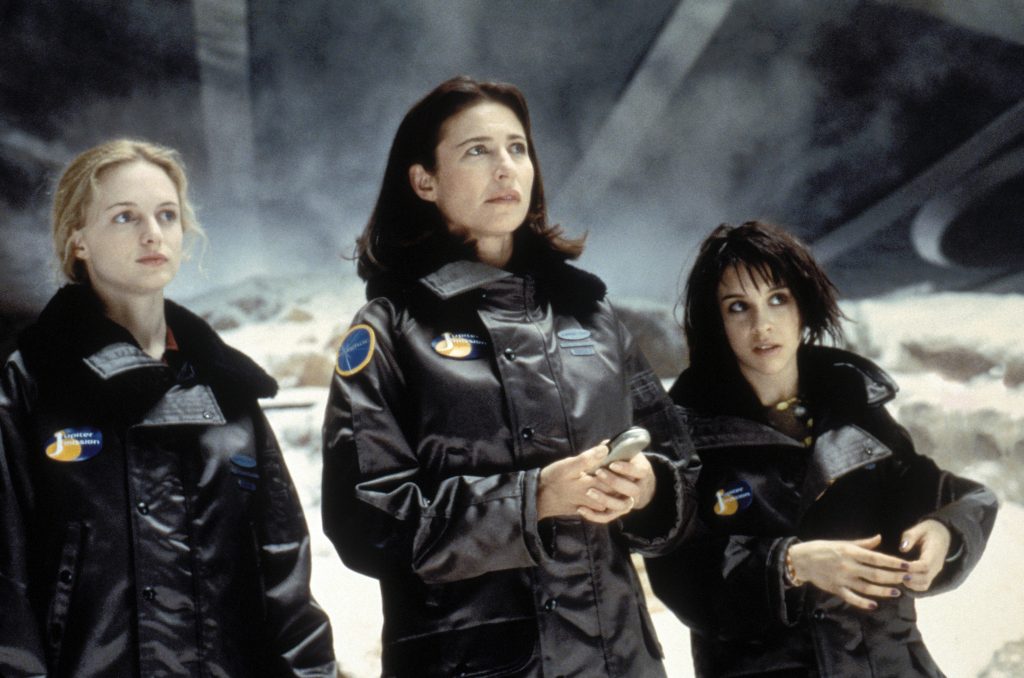
Summary 




If there’s a special place in your heart for this film, then you’re going to love the package Arrow Video has put together. There’s a bunch of features, the packaging is fun, and the essays are informative. If you’ve never seen it, then perhaps borrow it from a friend who did make the purchase and see for yourself.

















